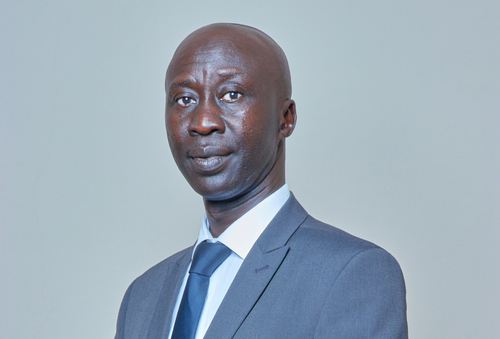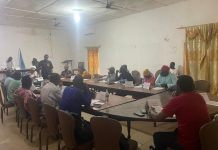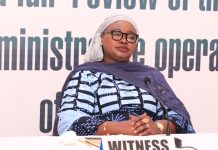By Amadou Manjang
The Gambia Ports Authority has initiated a project to expand the Banjul Port and construct a deep sea port in Sanyang, consequent upon the stiff competition and loss of revenue it was facing. In this regard, the Authority invited bids for concession and subsequently issued an award.
In this exclusive interview the Managing Director of GPA explains the challenges they face in expanding the Banjul Port and why they opted for a deep sea port in Sanyang.
- Has the concession been signed?
The concession has not been signed yet. Notice of Award was issued to one of the preferred bidders in the Port of Banjul Concession tender, Albayrak of Turkey and the transaction process has been ongoing since September 2023. Pre Contract negotiations commenced in November 2023 after the investor was required to submit a commercial proposal and financial model for minimal investment commitment to improve efficiency in the Port of Banjul, while the new deep seaport in Sanyang is being developed.
- When will work commence and when is it expected to complete?
The plans are for a concession contract to be signed before mid-2024, and up to 12 months conditions precedent allowed for the completion of the detailed engineering designs, preparation of ESIA and Resettlement Action Plan (RAP), land acquisition and other preparatory activities by the Parties. Once the conditions precedent are fulfilled, construction will commence and the first phase of the Sanyang project is expected to be delivered within 24 months, which is normal for green field marine projects of such nature.
- The Jetty now handles 2 ships simultaneously, how many vessels will be handled upon completion of the project?
The facilities to be constructed will be able to accommodate more than 2 vessels simultaneously as the layout of the infrastructure is what is being negotiated with the investor, and certainly will be an improvement of what is currently available in Banjul.

- What will be the capacity of the Port in terms of volume after the expansion?
There will be increased capacity to handle current and forecast volumes according to the 20 year demand study prepared for the Port of Banjul. To be more specific, throughout volumes are expected to increase during the concession period based on the captive volume and generated traffic due to the capacity improvements. With an annual average throughput of 2.8 million tonnes, the forecast indicates a base case of 7% annual growth. This is also expected to increase with the construction of new and expanded facilities to enhance the country’s potential to attract transit and transshipment cargo.
- You talked about container terminal in your last press conference. Will this be a separate terminal for containers?
Certainly, the project envisages the construction of dedicated facilities including container terminals, liquid and dry bulk terminals, fisheries port, cruise terminal, free zones and SEZs, truck marshalling areas and bonded warehouses.
- Room for Expansion in Banjul is a problem. How will you handle this with a much larger traffic?
The capacity of the Port in Banjul to expand seawards is constrained by the climate risk associated with sea level rise, perennial sedimentation in the estuary and the threat of flooding. The fact that the Port in Banjul is located within a residential zone and also surrounded commercial activities makes it difficult for spatial expansion towards the City. The resilience and adaptation measures to mitigate these risks warranted the conscious decision by Government to invoke the strategic commercial fit criteria in the Concession tender and pursue the option of relocating the Port to the southern coastline for the sustainable management and operations of ports in the country. The strategy is for the investor required to commit minimal investment in Banjul in the form of equipment, rehabilitation and expansion of the container yards, implementation of IT systems and reorganization of traffic flows to improve efficiency in Banjul, while the construction of the new deep seaport in Sanyang is ongoing. This will ensure efficiency improvement by faster ship turnaround time and increased ship output to cope with the current and forecast volumes.
- You also talked about digitalization. Are you talking about automation? If so what will be the implication for the unskilled and semi-skilled labour force and how will this be handled?
Certain IT systems have been implemented using in-house resources, which will be interfaced with the wider port digitalization component of the 4th Banjul Port Expansion Project. These include Shore Handling Revenue Collection System for a computer generated rating of charges to replace the manual system of calculating shore handling charges, went live on 1st February 2022; e-DO (electronic Delivery Order), live on 1st November 2023; e-Tally (Mobile APP and Web app) replacing the manual tallying of cargo discharged from and loaded onto ships, went live on 1st December 2023; e-Gate Passes with QR Codes Enable to replace the manual gate passes, which is currently being tested. An ERP system is also live and being run in parallel with the manual system until the latter phases out gradually. The new Port Management Information System (PMIS) to cater for Harbour Masters Log, berth planning and vessel management and part of cargo handling operations onshore, was launched by public tender in February 2023 and recommendation submitted for award to Pro-Develop of Spain. This will serve as prelude to the implementation of the Terminal Operating System (TOS). The TOS will automate all cargo handling processes at the various terminals and ICDs, with capacity to interface with PMIS and third-party stakeholder systems such as the Single Window Platform, full implementation after preparation of bid documents, tender, award of contract, technical visits, business process reengineering, training and deployment expected by mid-2025.
In all of these systems, user training for smooth transition is being factored, as the overall objective is to re-engineer the business processes for efficiency and transparency, without necessarily affecting job security of all categories of workers. It is envisaged that the infrastructure improvements will enhance the opportunity for job creation, while job security is one of the clauses that will bind the private investor in the Port concession.
- What are the terms and obligations of the GPA under the concession and what will be the benefits for The Gambia?
- Port project financing and investment is evolving and overall, it has been proven that international port operators have the investment capital, requisite know-how and network to transform ports and improve countries’ international trades, thus Government’s objective to leverage on this potential. The Port of Banjul Concession is structured in such a way that the GPA will be both a landlord and shareholder in the Project Company or SPV to be established, noting the strategic nature of the sovereign asset. The new Port infrastructure and logistics platforms in Basse and Kaur, will enhance the country’s competitive advantage in comparison to neighbouring ports by ensuring the provision of adequate facilities to serve both domestic and regional markets. Being a grantor and equity partner will ensure that the country benefits from fixed fees, royalties and dividends respectively, while participating in major decisions in the control environment as it relates to the concession contract. This model exists within the sub region in countries such as Ghana, Sierra Leone, Togo and Senegal.
- Who will manage the port after the completion of the project?
- After the project is delivered, the concession will be structured as an SPV in which Government and the GPA will be an equity partner in the Project Company as explained earlier. This is to ensure that Government will be involved in critical decisions relating to the management and operations of the port facilities.





















